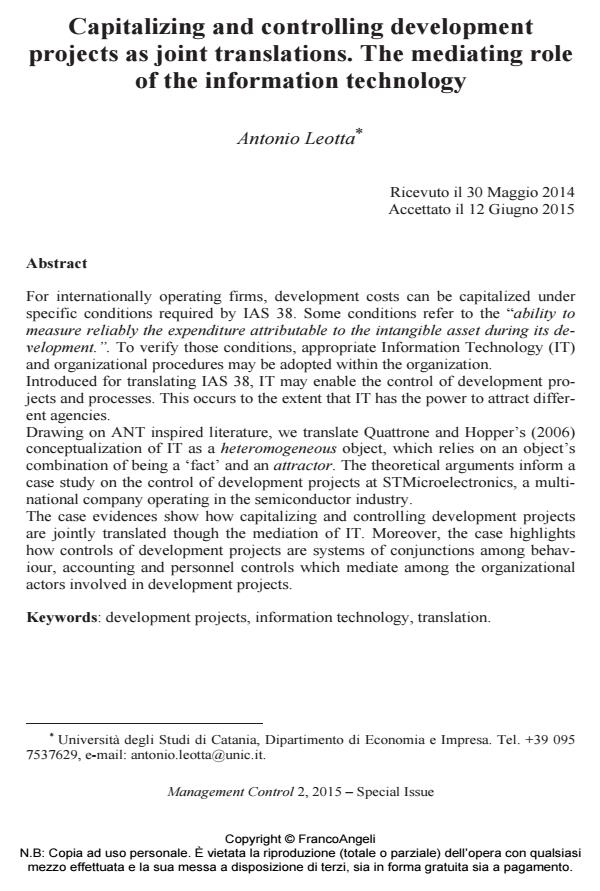Capitalizing and controlling development projects as joint translations. The mediating role of the information technology
Titolo Rivista MANAGEMENT CONTROL
Autori/Curatori Antonio Leotta
Anno di pubblicazione 2015 Fascicolo 2015/2
Lingua Inglese Numero pagine 34 P. 101-134 Dimensione file 197 KB
DOI 10.3280/MACO2015-002005
Il DOI è il codice a barre della proprietà intellettuale: per saperne di più
clicca qui
Qui sotto puoi vedere in anteprima la prima pagina di questo articolo.
Se questo articolo ti interessa, lo puoi acquistare (e scaricare in formato pdf) seguendo le facili indicazioni per acquistare il download credit. Acquista Download Credits per scaricare questo Articolo in formato PDF

FrancoAngeli è membro della Publishers International Linking Association, Inc (PILA)associazione indipendente e non profit per facilitare (attraverso i servizi tecnologici implementati da CrossRef.org) l’accesso degli studiosi ai contenuti digitali nelle pubblicazioni professionali e scientifiche
For internationally operating firms, development costs can be capitalized under specific conditions required by IAS 38. Some conditions refer to the "ability to measure reliably the expenditure attributable to the intangible asset during its development". To verify those conditions, appropriate Information Technology (IT) and organizational procedures may be adopted within the organization. Introduced for translating IAS 38, IT may enable the control of development projects and processes. This occurs to the extent that IT has the power to attract different agencies. Drawing on ANT inspired literature, we translate Quattrone and Hopper’s (2006) conceptualization of IT as a heteromogeneous object, which relies on an object’s combination of being a ‘fact’ and an attractor. The theoretical arguments inform a case study on the control of development projects at STMicroelectronics, a multinational company operating in the semiconductor industry. The case evidences show how capitalizing and controlling development projects are jointly translated though the mediation of IT. Moreover, the case highlights how controls of development projects are systems of conjunctions among behaviour, accounting and personnel controls which mediate among the organizational actors involved in development projects.
Parole chiave:Development projects, information technology, translation.
- Critical Thinking Skills Enhancement through System Dynamics-Based Games: Insights from the Project Management Board Game Project Federico Barnabè, Stefano Armenia, Sarfraz Nazir, Alessandro Pompei, in Systems /2023 pp.554
DOI: 10.3390/systems11110554
Antonio Leotta, Capitalizing and controlling development projects as joint translations. The mediating role of the information technology in "MANAGEMENT CONTROL" 2/2015, pp 101-134, DOI: 10.3280/MACO2015-002005